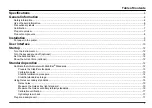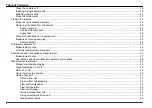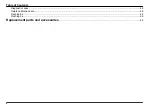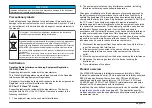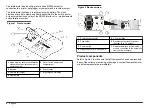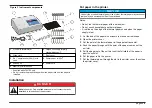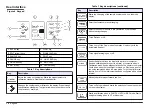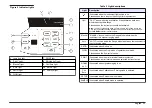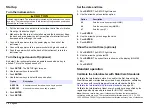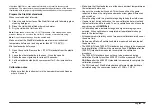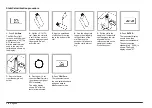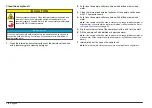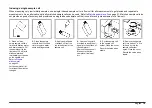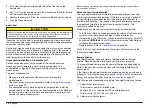
other than StablCal, or user-prepared formazin, may result in less accurate
calibrations. The manufacturer cannot guarantee the performance of the instrument
if calibrated with co-polymer styrenedivinylbenzene beads or other suspensions.
Prepare the StablCal standards
When received and at intervals:
1.
Clean the exterior surface of the StablCal vials with laboratory glass
cleaning detergent.
2.
Rinse the vials with distilled or deionized water.
3.
Dry the vials with a lint-free cloth.
Note: Never shake or invert the < 0.1 NTU standard. If the standard has been
mixed or shaken, do not move the vial for 15 minutes or more before using.
Note: Do not remove the caps from the sealed vials.
Make sure that the StablCal standards are at ambient instrument
temperature before use (and no greater than 40 °C (104 °F)).
Mix the standards before use:
1.
Open the case lid. Remove the < 0.1 NTU standard from the plastic
case.
2.
Leave the other standards in the case. Close the case lid.
3.
Shake the case vigorously for at least 10 seconds.
4.
Let the standards stand with no movement for 3–5 minutes before
use.
Calibration notes
• Make sure that the instrument is in the same ambient conditions as
where it is used.
• Make sure that the standards are at the same ambient temperature as
the instrument before use.
• Use only the provided silicone oil. This silicone oil has the same
refractive index as the vial glass and masks minor glass differences
and scratches.
• Store the oiling cloth in a plastic storage bag to keep the cloth clean.
• If power is lost during calibration, the new calibration data is lost and
the last calibration data is used. To exit a calibration and not save the
new values, push
UNITS/Exit
.
• In Calibration mode, automatic range and signal averaging on are
selected. When calibration is completed, all operational modes go
back to the last settings.
• All nephelometric (turbidity units of measure) calibrations are done at
the same time.
• Ratio-on and Ratio-off calibration data is measured and recorded at
the same time.
• The 4000-NTU and 7500-NTU standards do not have to be measured
during calibration if FNUs will be measured. Push
CAL/Zero
after the
1000 NTU standard is measured to complete the calibration
procedure.
• The 7500-NTU standard does not have to be measured during
calibration if turbidity less than 4000 NTU will be measured. Push
CAL/Zero
after the 4000 NTU standard is measured to complete the
calibration procedure.
• The FNU values of StablCal standards and formazin standards are
calculated using the conversion factors of 1 FNU = 1 NTU.
English
13
Содержание 2100AN IS
Страница 1: ...DOC022 53 80206 2100AN IS 05 2014 Edition 4 User Manual...
Страница 2: ......
Страница 51: ......



